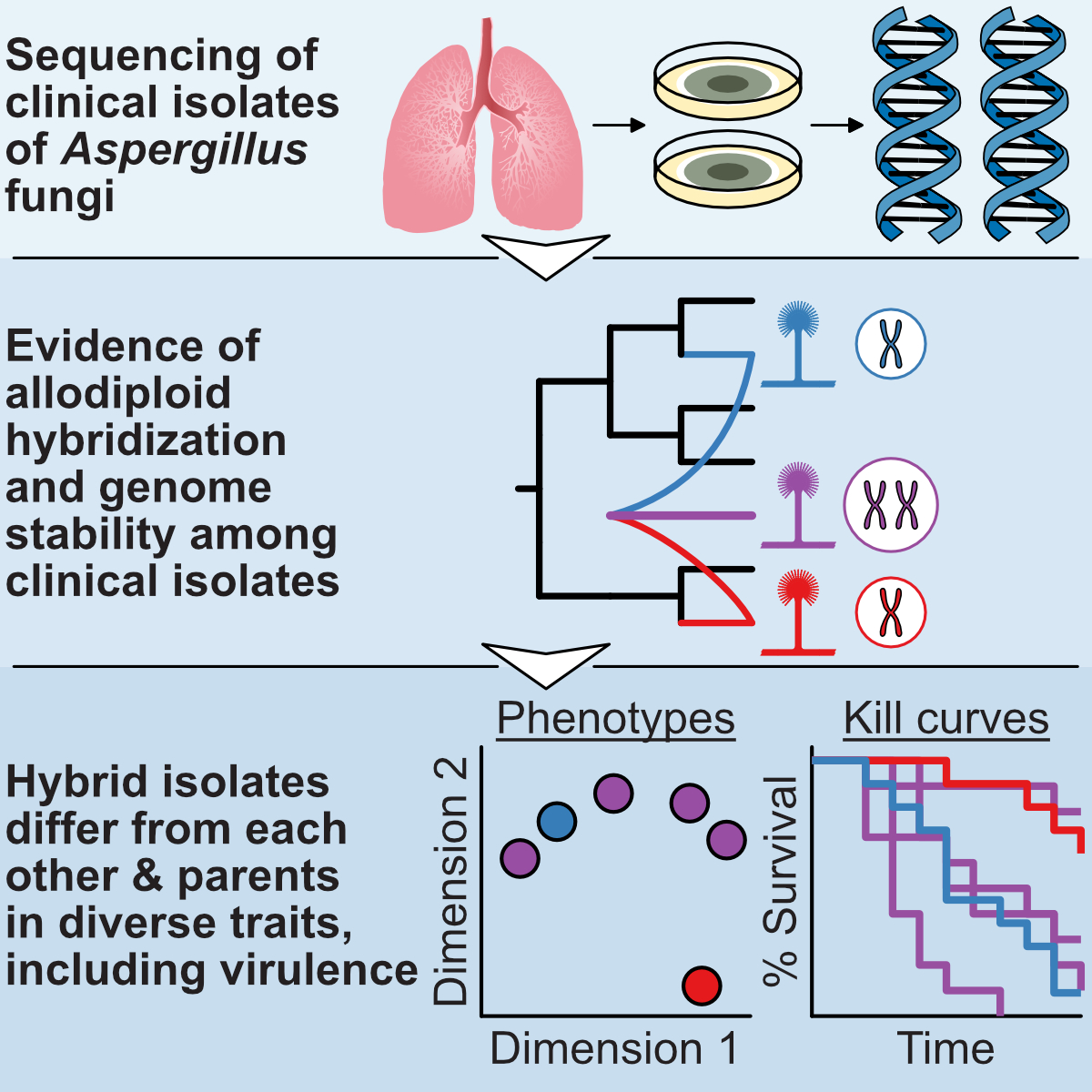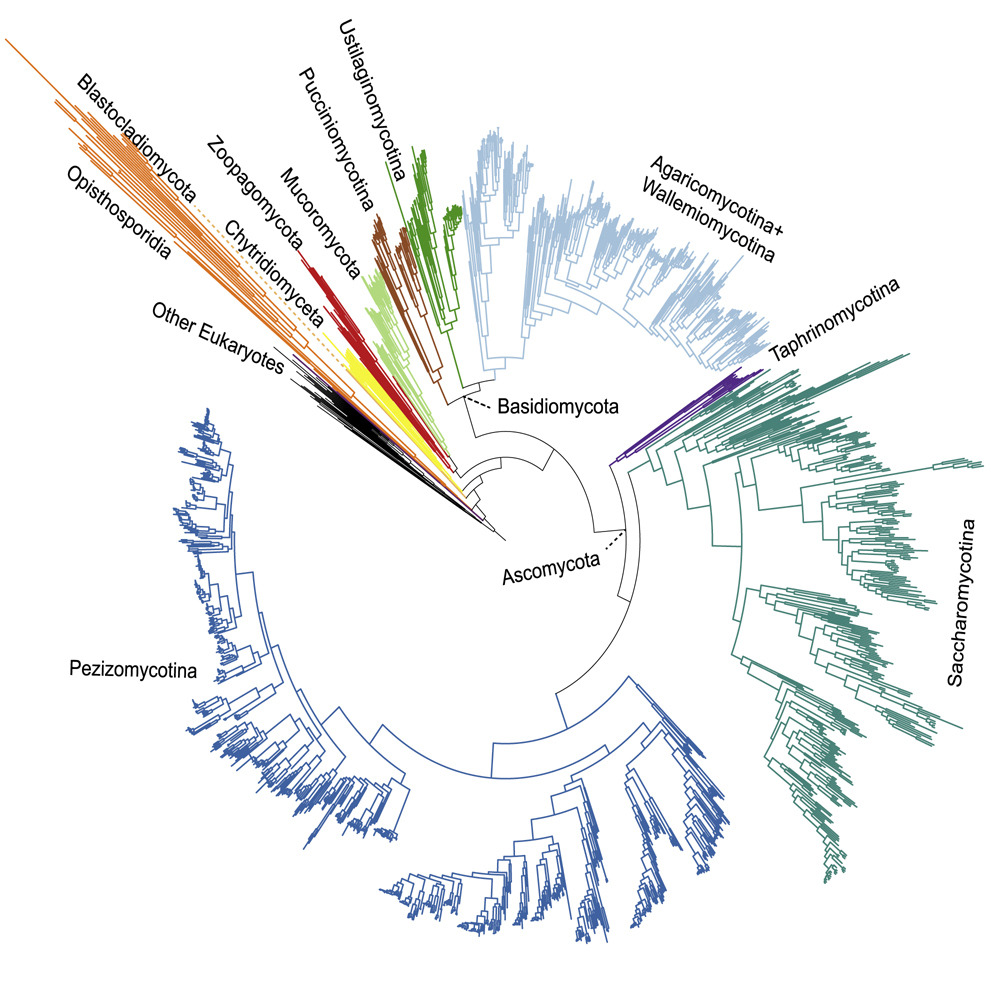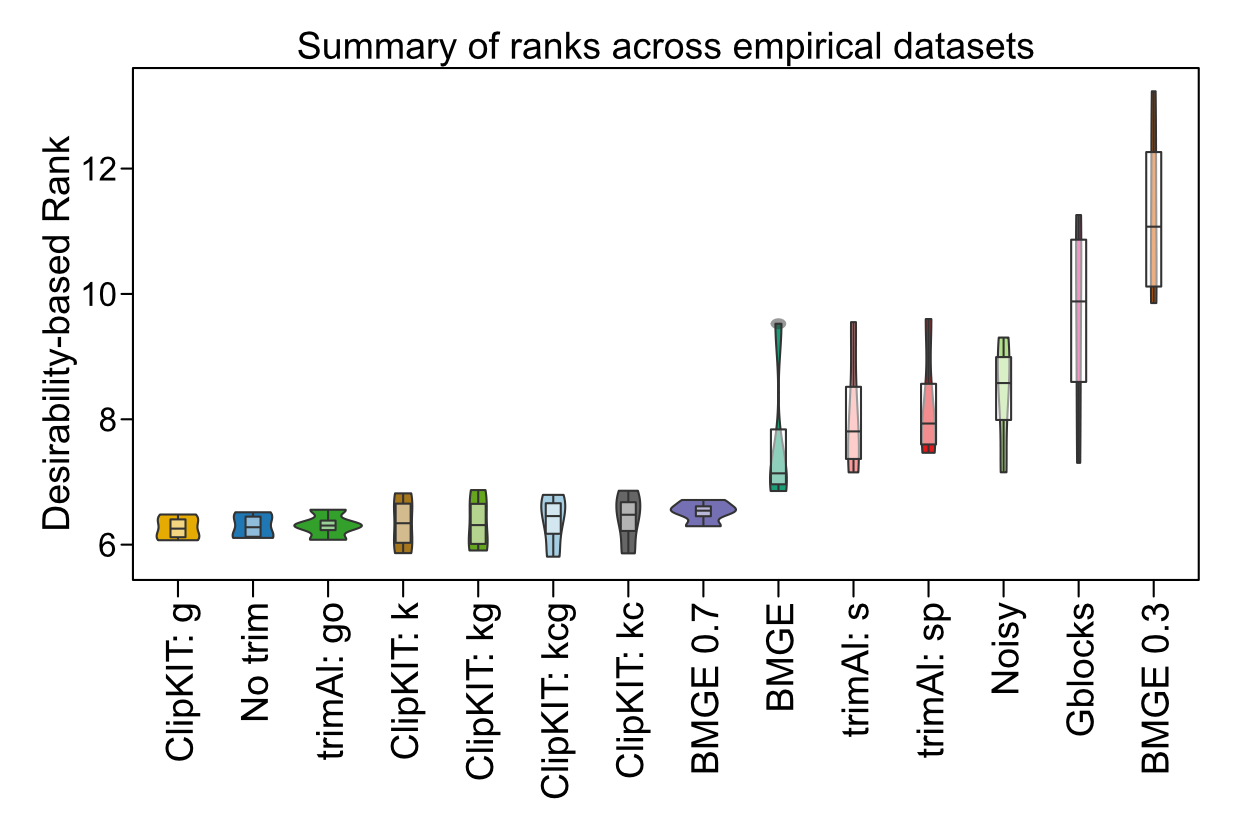About
My research encompasses a range of topics within the fields of evolutionary biology, genomics, and bioinformatics. I primarily focus on the evolution and
function of genomes, with a particular emphasis on animals and fungi. I aim to understand the evolutionary modes and molecular mechanisms that contribute to
fungal pathogenicity, which has significant implications for identifying, preventing, and combating fungal infections. This work extends to understanding the
genetic and evolutionary basis of traits across different fungal species, contributing to a broader understanding of genome function and evolution.
I am also involved in the development of computational tools to support research in the biological sciences. I have developed several
software, such as ClipKIT and
PhyKIT, which are designed to improve the analysis, processing, and interpretation of phylogenomic data.
These tools help researchers to conduct more efficient and accurate analyses in evolutionary biology and related fields.
Research efforts have been enabled by collaborative efforts. Collaboration is powerful because what we can achieve together is far greater than what we can achieve alone.
If you'd like to discuss potentially working together, please feel free to get in touch.
In addition to scientific research, I am committed to promoting diversity, equity, and inclusion in the STEM fields. I actively participate in community
engagement and science communication efforts to increase the representation of underrepresented groups in science and to foster a dialogue between scientists
and the public. For example, I write a broadly accessible newsletter titled Genomely: where genomics and evolution converge.
Genomely is dedicated to exploring the world of genomics, with a special focus on evolutionary and comparative studies. Subscribe for free!
Research Interests
Genome Evolution and Function
 Determining the principles of genome function and evolution is a major goal in evolutionary biology. The Saccharomycotina subphylum of yeasts
are a remarkably diverse group of organisms. In fact, budding yeast diversity is roughly on par with the animal and plant kingdoms (see
figure from Shen et al. 2018, Cell). As part of the
Y1000+ initiative, sequencing and analysis of 1,000+ budding yeast species is underway.
To date, numerous insights into the tempo and mode of genome evolution across approximately 400 million years have been made.
For example, a genetic network inferred from evolutionary information captured conserved cellular structure and genome function
(Steenwyk et al. 2022, Science Advances).
Discoveries have also been made among specific lineages; for example, budding yeast from the genus
Hanseniaspora have lost numerous cell cycle and DNA repair genes (Steenwyk
et al. 2019, PLOS Biology). This discovery is in conflict with current wisdom, which suggests these genes are important to
all life and are therefore evolutionarily 'resistant' to change. These and other studies highlight the dynamics of genome evolution.
Determining the principles of genome function and evolution is a major goal in evolutionary biology. The Saccharomycotina subphylum of yeasts
are a remarkably diverse group of organisms. In fact, budding yeast diversity is roughly on par with the animal and plant kingdoms (see
figure from Shen et al. 2018, Cell). As part of the
Y1000+ initiative, sequencing and analysis of 1,000+ budding yeast species is underway.
To date, numerous insights into the tempo and mode of genome evolution across approximately 400 million years have been made.
For example, a genetic network inferred from evolutionary information captured conserved cellular structure and genome function
(Steenwyk et al. 2022, Science Advances).
Discoveries have also been made among specific lineages; for example, budding yeast from the genus
Hanseniaspora have lost numerous cell cycle and DNA repair genes (Steenwyk
et al. 2019, PLOS Biology). This discovery is in conflict with current wisdom, which suggests these genes are important to
all life and are therefore evolutionarily 'resistant' to change. These and other studies highlight the dynamics of genome evolution.
Steenwyk et al. (2022) Science Advances
Steenwyk et al. (2019) PLOS Biology
Steenwyk & Rokas (2016) G3
Fungal Pathogenicity
 Filamentous fungi including species from the genera Aspergillus and Candida are of medical and technologic importance.
Some species pose threats to human or plant health while others produce mainstay pharmaceuticals like penicillin. Studies unraveling the
evolutionary history of these genera will help uncover the molecular processes that contribute to some microbes being harmful to humans
while others are helpful. In one study, we investigated the evolutionary history of globally distributed clinical isolates of Aspergillus
latus, which led to the discovery that A. latus originated from allodiploid hybridization wherein the genome content of both
parental species is maintained (see figure from Steenwyk, Lind
et al. 2020, Current Biology). Aspergillus hybrids exhibited phenotypic heterogeneity and were distinct from closely
related species including their parents and their close relatives. These results suggest that allodiploid hybridization contributes to
the evolution of filamentous fungal pathogens. In a separate study, genomic and phenotypic analysis revealed the genomes of nonpathogenic
Aspergillus fungi encoded genes known to impact virulence and have similar phenotypic profiles compared to pathogenic species
(Steenwyk et al. 2020, Genetics).
These findings raise the question of "what makes a pathogen?"
Filamentous fungi including species from the genera Aspergillus and Candida are of medical and technologic importance.
Some species pose threats to human or plant health while others produce mainstay pharmaceuticals like penicillin. Studies unraveling the
evolutionary history of these genera will help uncover the molecular processes that contribute to some microbes being harmful to humans
while others are helpful. In one study, we investigated the evolutionary history of globally distributed clinical isolates of Aspergillus
latus, which led to the discovery that A. latus originated from allodiploid hybridization wherein the genome content of both
parental species is maintained (see figure from Steenwyk, Lind
et al. 2020, Current Biology). Aspergillus hybrids exhibited phenotypic heterogeneity and were distinct from closely
related species including their parents and their close relatives. These results suggest that allodiploid hybridization contributes to
the evolution of filamentous fungal pathogens. In a separate study, genomic and phenotypic analysis revealed the genomes of nonpathogenic
Aspergillus fungi encoded genes known to impact virulence and have similar phenotypic profiles compared to pathogenic species
(Steenwyk et al. 2020, Genetics).
These findings raise the question of "what makes a pathogen?"
Steenwyk et al. (2024) Nature Communications
Steenwyk et al. (2023) PLOS Pathogens
Steenwyk, Lind et al. (2020) Current Biology
Phylogenomics
 Phylogenomics aims to elucidate the evolutionary history of species, genes, and other biological entities. Several projects aim to determine
the evolutionary history among lineages such as fungi (e.g., see figure from Li et al. 2021, Current Biology)
and other projects aim to develop novel methods in phylogenomics (e.g., Shen et al. 2021, Systematic Biology).
These studies help provide the necessary backbone to study the evolution of traits, genes, and other biological entities. Moreover, divergence time analysis has also
placed the evolutionary history of some lineages in geologic time, enabling insights to when certain lineages arose (Steenwyk et al. 2019, mBio)
These and other studies have revealed many aspects of evolutionary histories, including the prominence of incongruence — that is, conflicting phylogenetic hypotheses.
Together with a rich history of literature, we recently synthesized incongruence, methods to ameliorate it, and identified avenues for future research
(Steenwyk et al. 2023, Nature Reviews Genetics), capturing the maturation of the field.
Phylogenomics aims to elucidate the evolutionary history of species, genes, and other biological entities. Several projects aim to determine
the evolutionary history among lineages such as fungi (e.g., see figure from Li et al. 2021, Current Biology)
and other projects aim to develop novel methods in phylogenomics (e.g., Shen et al. 2021, Systematic Biology).
These studies help provide the necessary backbone to study the evolution of traits, genes, and other biological entities. Moreover, divergence time analysis has also
placed the evolutionary history of some lineages in geologic time, enabling insights to when certain lineages arose (Steenwyk et al. 2019, mBio)
These and other studies have revealed many aspects of evolutionary histories, including the prominence of incongruence — that is, conflicting phylogenetic hypotheses.
Together with a rich history of literature, we recently synthesized incongruence, methods to ameliorate it, and identified avenues for future research
(Steenwyk et al. 2023, Nature Reviews Genetics), capturing the maturation of the field.
Steenwyk et al. (2023) Nature Reviews Genetics
Li et al. (2021) Current Biology
Steenwyk et al. (2019) mBio
Development of Computational Tools
 Research in the biological sciences — such as evolutionary biology, molecular biology, and others — often relies on computational tools.
To equip bioinformaticians with the necessary computational tools, I have developed multiple software. For example,
ClipKIT an alignment trimming algorithm that retains phylogenetically informative sites and
removes the rest, outperformed other alignment trimming methods across a total of ~140 thousand alignments (see figure from
Steenwyk et al. 2020, PLOS Biology; browser application).
PhyKIT, a Swiss-army knife toolkit for processing and analyzing multiple sequence alignments
and phylogenies, facilitates determining information content in phylogenomic data matrices, conduct evolution-based screens of gene function,
and identify putative signatures of rapid radiation events among other things
(Steenwyk et al. 2021, Bioinformatics). A complete list of
software I have developed can be found on the software page.
Research in the biological sciences — such as evolutionary biology, molecular biology, and others — often relies on computational tools.
To equip bioinformaticians with the necessary computational tools, I have developed multiple software. For example,
ClipKIT an alignment trimming algorithm that retains phylogenetically informative sites and
removes the rest, outperformed other alignment trimming methods across a total of ~140 thousand alignments (see figure from
Steenwyk et al. 2020, PLOS Biology; browser application).
PhyKIT, a Swiss-army knife toolkit for processing and analyzing multiple sequence alignments
and phylogenies, facilitates determining information content in phylogenomic data matrices, conduct evolution-based screens of gene function,
and identify putative signatures of rapid radiation events among other things
(Steenwyk et al. 2021, Bioinformatics). A complete list of
software I have developed can be found on the software page.
Steenwyk et al. (2022) PLOS Biology
Steenwyk et al. (2021) Bioinformatics
Steenwyk et al. (2020) PLOS Biology



